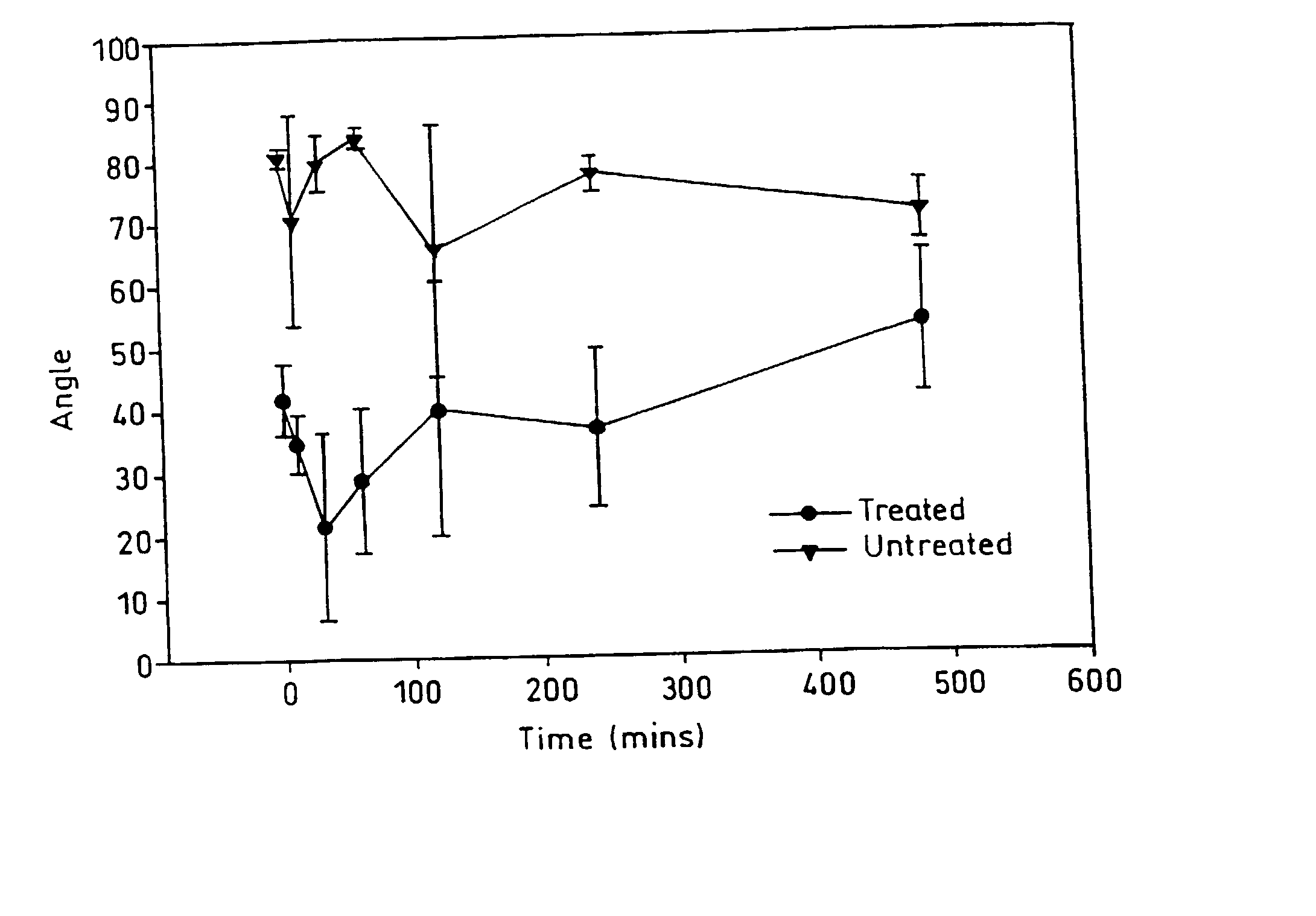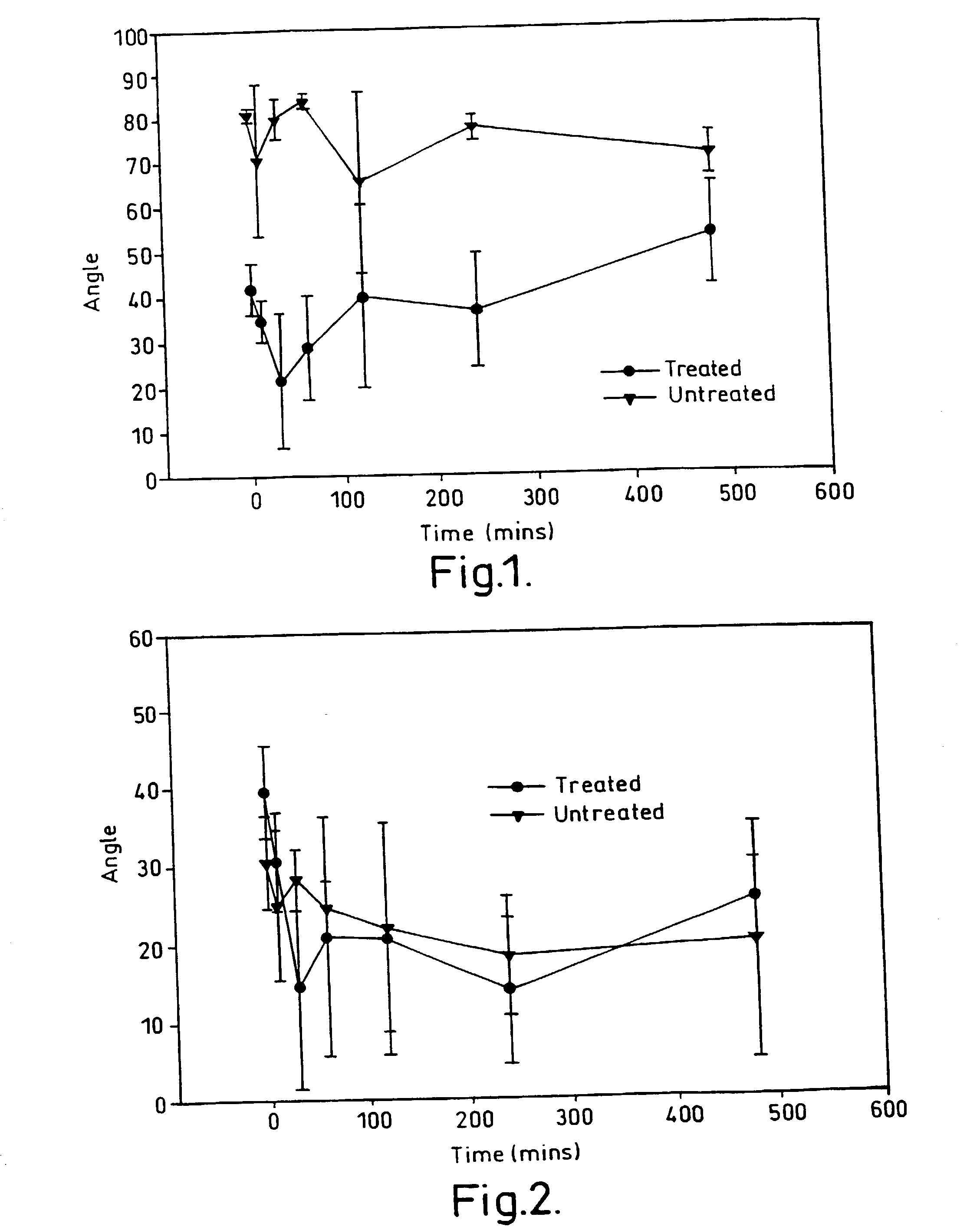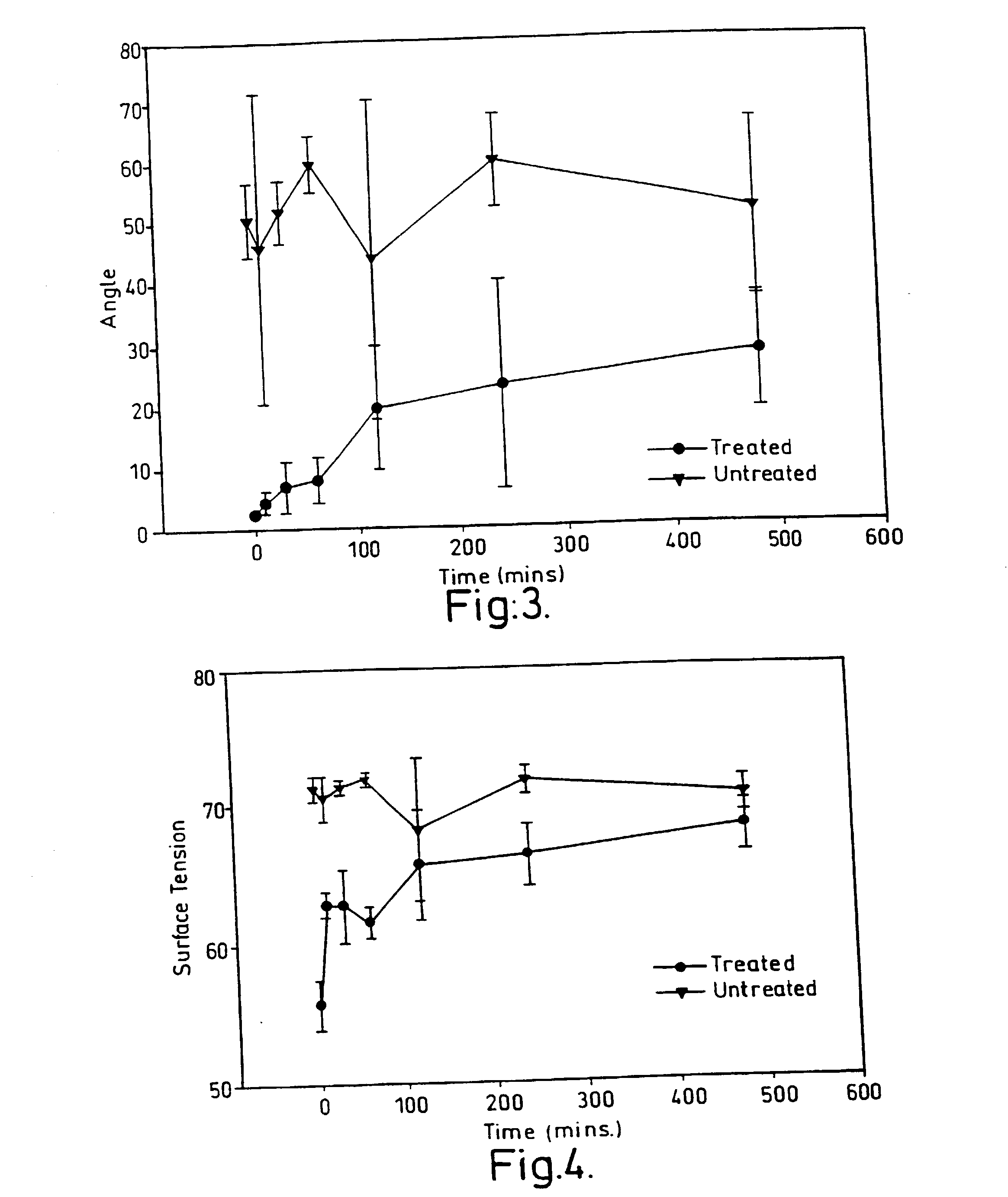Contact lens packing solutions
a contact lens and solution technology, applied in the field of new and improved solutions for packaging contact lenses, can solve the problems of reducing shelf life and/or adverse reactions, providing no evidence of the alleged benefits of compound use, and using any surfactants in storage, so as to reduce hysteresis, reduce surface mobility in the treated lens, and reduce the effect of hysteresis
- Summary
- Abstract
- Description
- Claims
- Application Information
AI Technical Summary
Benefits of technology
Problems solved by technology
Method used
Image
Examples
example 3
[0077] This example illustrates comparative surface chemical properties of various surfactants for use in a contact-lens packing solution, including the persistence thereof. The following surfactants were tested: Pluronic.RTM. F127 (a poloxamer), Tetronic 1107 (a poloxamine), and tyloxapol. (Tyloxapol is a non-ionic surfactant that is an oxyethylated tertiary octylphenol formaldehyde polymer.) The test was conducted on fully hydrated hydrogels / lenses and the hysteresis observed between the advancing and receding contact angles was taken as an indication of the change in the level of wettability of the sample between the dry and wet state. This, in turn, is a consequence of the mobility of the groups present at the surface. In the case of an untreated hydrogel in air the polymer chains will freely rotate to orientate their hydrophobic or non-wettable moieties towards the hydrophobic air / gel interface, whilst in the wetted state the reverse will occur and the hydrophilic groups will o...
PUM
| Property | Measurement | Unit |
|---|---|---|
| osmolality | aaaaa | aaaaa |
| weight percent | aaaaa | aaaaa |
| water content | aaaaa | aaaaa |
Abstract
Description
Claims
Application Information
 Login to View More
Login to View More - R&D
- Intellectual Property
- Life Sciences
- Materials
- Tech Scout
- Unparalleled Data Quality
- Higher Quality Content
- 60% Fewer Hallucinations
Browse by: Latest US Patents, China's latest patents, Technical Efficacy Thesaurus, Application Domain, Technology Topic, Popular Technical Reports.
© 2025 PatSnap. All rights reserved.Legal|Privacy policy|Modern Slavery Act Transparency Statement|Sitemap|About US| Contact US: help@patsnap.com



